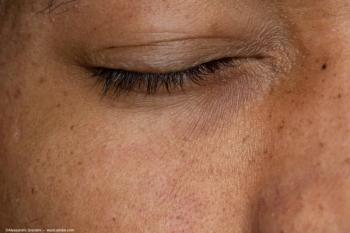
Seborrheic dermatitis linked to multiple epithelial barrier diseases
Key Takeaways
- Seborrheic dermatitis is linked to other epithelial barrier diseases, supporting the epithelial barrier theory as a shared pathogenesis driver.
- Positive associations were found with atopic dermatitis, alopecia areata, contact dermatitis, psoriasis, rosacea, and other EBDs.
This retrospective cohort study used a large US administrative claims database to identify patients with a diagnosis of seborrheic dermatitis from January 1, 2016, through June 30, 2022.
Researchers from the Perelman School of Medicine at the University of Pennsylvania, Philadelphia, reported an association between seborrheic dermatitis, a common epithelial barrier disease (EBD) of the skin, and that the skin disease is associated with other EBDs that originate in other epithelial barriers in the body, including the skin, respiratory, gastrointestinal, and ocular surfaces.1 The investigators, led by Sabrina Meng, BS, published their results in JAMA Dermatology.
They explained the complex association of EBDs with bodily systems. “Epithelial barrier disruption has been implicated in the development of many EBDs of the skin, respiratory tract, gastrointestinal tract, and ocular surface.2 The epithelial barrier theory (EBT) posits that these EBDs arise from epithelial barrier disruption, which results in host tissue exposure to pathogens, environmental pollutants, and allergens.2,3 These exposures lead to a cycle of pathological events that include pathogen and/or allergen migration to subepithelial areas, immune response, chronic inflammation, and impaired epithelial barrier healing.2-5 The result of this damage is an inflammatory state, which is thought to contribute to the development of chronic inflammatory conditions,2” they explained.
The investigators therefore theorized that “seborrheic dermatitis–associated epithelial barrier dysfunction may be associated with a chronic inflammatory state and an increased frequency of diseases specified by the EBT model, many of which are immunologically mediated.2 They conducted a retrospective cohort study to determine if there was an association between seborrheic dermatitis and EBDs.
This retrospective cohort study used a large US administrative claims database to identify patients with a diagnosis of seborrheic dermatitis from January 1, 2016, through June 30, 2022. The adults identified had at least 1 year of continuous enrollment and underwent a minimum of 2 visits on unique days to a medical professional. The patients were followed for a mean of 3.46 years. The main outcome was the diagnosis of an EBD during the observation period.
What did the study determine about seborrheic dermatitis?
The researchers identified 733,776 patients (median age, 62.63 years; 54.7% female) with seborrheic dermatitis.
Using adjusted models, Ms. Meng and colleagues found that seborrheic dermatitis was positively associated with the following disorders: “atopic dermatitis (odds ratio [OR], 3.21; 95% confidence interval [CI], 3.18-3.24), alopecia areata (OR, 4.02; 95% CI, 3.93-4.11), contact dermatitis (OR, 2.25; 95% CI, 2.23-2.26), psoriasis (OR, 3.26; 95% CI, 3.23-3.29), rosacea (OR, 4.52; 95% CI, 4.49-4.56), hidradenitis suppurativa (OR, 1.63; 95% CI, 1.58-1.68), chronic spontaneous urticaria (OR, 1.35; 95% CI, 1.33-1.37), pemphigus vulgaris (OR, 1.48; 95% CI, 1.31-1.69), bullous pemphigoid (OR, 1.60; 95% CI, 1.51-1.70), rhinosinusitis (OR, 1.24; 95% CI, 1.24-1.25), celiac disease (OR, 1.36; 95% CI, 1.32-1.39), irritable bowel syndrome (OR, 1.32; 95% CI, 1.31-1.33), ocular allergy (OR, 1.39; 95% CI, 1.37-1.41), and dry eye (OR, 1.48; 95% CI, 1.48-1.49),” they reported.
Negative associations included chronic obstructive pulmonary disease (OR, 0.72; 95% CI, 0.71-0.72) and pulmonary hypertension (OR, 0.70; 95% CI, 0.69-0.71).
They reached the conclusion of “supporting the EBT as a shared driver in the pathogenesis of seborrheic dermatitis and other diverse EBDs and encouraged further investigation into the underlying mechanisms of disease pathogenesis.”
Meng and colleagues suggested that their results “may arise from variations in epithelial barrier physiology; differing inflammatory mechanisms; and the influence of other factors, such as genetics, environment, complex physiologic etiologies, and skin microbiota, on EBD outcomes.”
They pointed out the need for further studies to investigate the temporal relationship between seborrheic dermatitis and EBDs and explore the underlying molecular mechanisms linking seborrheic dermatitis to EBDs, which will better characterize the role of the EBT model in disease pathogenesis.
References
Meng S, Berna R, Hoffstad O, et al. Epithelial barrier diseases among adult patients with seborrheic dermatitis. JAMA Dermatol. 2025; published online November 5; doi:10.1001/jamadermatol.2025.4313
SunN, Ogulur I, Mitamura Y, et al. The epithelial barrier theory and its associated diseases. Allergy. 2024;79:3192-3237. doi:
10.1111/all.16318 Akdis CA. Does the epithelial barrier hypothesis explain the increase in allergy, autoimmunity and other chronic conditions? Nat Rev Immunol. 2021;21(11):739-751. doi:
10.1038/s41577-021-00538-7 Losol P, Sokolowska M, Hwang YK, et al. Epithelial barrier theory: the role of exposome, microbiome, and barrier function in allergic diseases. Allergy Asthma Immunol Res. 2023;15:705-724. doi:
10.4168/aair.2023.15.6.705 Moens E, Veldhoen M. Epithelial barrier biology: good fences make good neighbours. Immunology. 2012;135:1-8. doi:
10.1111/j.1365-2567.2011.03506.x
Newsletter
Don’t miss out—get Ophthalmology Times updates on the latest clinical advancements and expert interviews, straight to your inbox.


















































.png)


